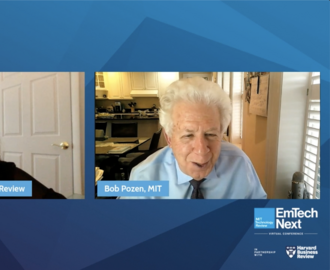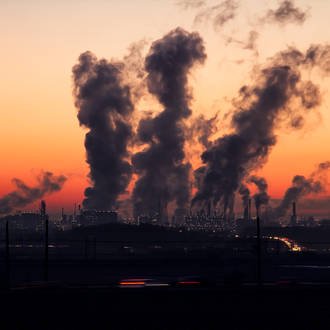If one roof covered with solar panels is good, then two are twice as good, right? And 100 are 100 times as good?
That isn’t true with a lot of good things -- chocolate chip ice cream cones, aspirin, wasabi sauce. It turns out that it’s not true for energy sources, either. For solar, the first few panels are extremely valuable, and the next tranche is useful. After that, value falls.
John Reilly is the co-director of the Joint Program on the Science and Policy of Global Change, and a Senior Lecturer at the MIT Sloan School of Management
According to a new analysis by the Energy Department’s Lawrence Berkeley Laboratory, we can see that already in California. Solar production has expanded to 20 percent of California’s electricity, but solar energy’s value has fallen by about half, because the market price of electricity is depressed by the flood of solar during peak solar hours.
The news isn’t all bad; the price of solar panels has fallen too, so new solar still has value in California. But value is poised to fall even faster, because of the increasing number of hours of the year with an overload, when the last few panels produce a surplus rather than a useable product.
A biologist would call it overpopulation. Economists are less colorful; they say “declining marginal utility.’’ That term is classically described with an analogy: a family serving hot dogs at a picnic would pay a lot for the first bottle of mustard, and something for the second, but nothing for the 100th.
But declining marginal utility isn’t an operative concept in the political world. There, state governments establish “renewable energy portfolio standards,” specifying the percentage of electricity that must come from weather-based generators. A zero-carbon standard would make more sense, but the states are on a bandwagon, some even specifying how much will be solar and how much will be wind.
One of the unknowns in striving for a zero-carbon economy is what our energy mix should be. For years the balance of coal, nuclear, hydro and gas were determined by economics and by evolving technologies; more recently the heavy hand of government subsidies and mandates has played a role, and solar and wind have gained ground, but together are still less than 10 percent of the national total.
How high can they go? Eventually, physics has to have the last word; no matter how much the public loves solar and wind, no matter how cheap they become, and no matter what the public policy. their marginal utility will decline as their penetration increases. The California experience will be replicated elsewhere. (Although not yet; solar share outside California is less than 2 percent.)
Storage could make a difference, but chemical batteries are a very expensive way to store a very cheap commodity. Storing a kilowatt-hour, the amount of energy needed to run a hand-held hair dryer for 45 minutes, requires $300 worth of hardware. That could come down, too, but batteries have drawbacks: building them requires extensive mining and release of carbon dioxide, and using them increases the carbon footprint of each kilowatt-hour, since they lose energy in the charge/discharge process, somewhat like a leaky bucket. Getting 4 kWh out of them often requires putting 5 kWh in.
The overload problem isn’t limited to solar. In some places in the Midwest, on mild nights when wind is strong and demand is low, wind turbines put so much energy on the grid that the price goes negative; that is, grid operators discourage generators from adding energy by insisting that the generators pay, rather than receive payment. But policy fights physics, because the wind farms earn a tax credit for each kWh they produce, and can make money even when prices are negative.
The findings of the Lawrence Berkeley study aren’t new, just newly detailed. Earlier work, including by Jesse Jenkins, the Princeton energy economist, has established clearly that as the share of intermittent renewable energy rises, costs multiply. The solution is zero-carbon energy that is “dispatchable,” meaning cranked up or down as the grid requires.
A big chunk of that is nuclear energy. Not just the plants we have today, but new ones that are set up to modulate their output, like NuScale Power, or to store it, like Natrium.
The alternative is building a solar array sufficient to gather enough energy for a day in December, and being flooded in June, or enough wind farms to scavenge energy on the listless days of August, and drown in it in March.
It’s not clear whether the world is willing to spend enough to save the climate. Success is more likely if we find the most efficient route.
John M. Reilly is the former co-director of the MIT Joint Program on the Science and Policy of Global Change, and a Senior Lecturer at the MIT Sloan School of Management



